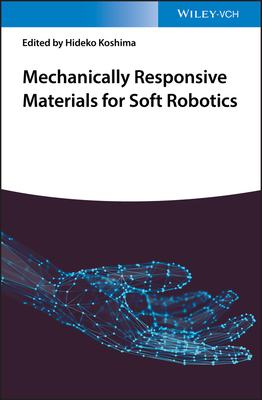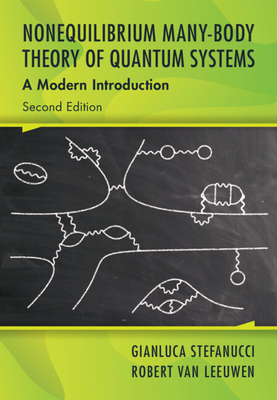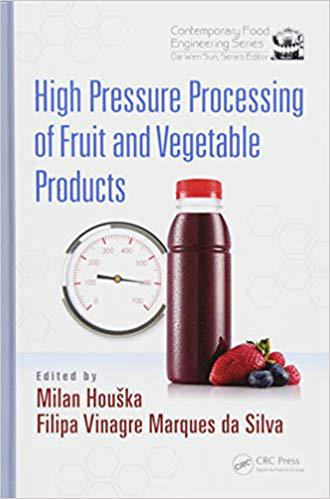图书简介
This book covers the mechanical materials as artificial muscles as well as the self-healing and the strain sensor materials as artificial skins, which are indispensable to make soft robots. The mechanical materials include polymers, gels and crystals, with stimulation by light and heat. It not only offers a comprehensive, timely snapshot of current research on mechanically responsive materials, together with manufacture of soft robotics, but also provides with the forefront of the study of mechanical materials for soft robotics.
Preface xiii Part I Mechanically Responsive Crystals 1 1 Photomechanical Behavior of Photochromic Diarylethene Crystals 3 Seiya Kobatake and Daichi Kitagawa 1.1 Introduction 3 1.2 Crystal Deformation Exhibiting Expansion/Contraction upon Photoirradiation 6 1.3 Photoresponsive Bending 7 1.4 Dependence of Bending Behavior on Irradiation Wavelength 11 1.5 Photomechanical Work of Diarylethene Crystals That Exhibit Bending 13 1.6 New Types of Photomechanical Motion 15 1.7 Photosalient Effect 20 1.8 Summary 22 References 23 2 Photomechanical Crystals Made from Anthracene Derivatives 29 Fei Tong, Christopher J. Bardeen, and Rabih O. Al-Kaysi 2.1 Introduction 29 2.2 Elements of Photomechanical Molecular Crystals 30 2.3 The Advantage of Using Anthracene Derivatives in Photomechanical Crystals 33 2.4 Types of Anthracene Photomechanical Crystals 34 2.4.1 NR-Type Anthracene Derivatives 34 2.4.1.1 9-Anthracene Carboxylate Ester Derivatives 34 2.4.1.2 9-Methylanthracene 36 2.4.1.3 9-Cyanoanthracne, 9-Anthealdehyde, and 9,10-Dinitroanthracene 37 2.4.1.4 Conjugated Anthracene Derivatives with Trans-to-Cis Photochemistry 38 2.4.2 T-Type Photomechanical Crystals Based on Reversible 4 +4 Photodimerization 39 2.4.3 P-Type Anthracene Derivatives 44 2.5 Synthesis of Anthracene Derivatives 46 2.6 Future Direction and Outlook 47 2.6.1 Modeling Reaction Dynamics in Molecular Crystals 47 2.6.2 New Anthracene Derivatives and Crystal Shapes 48 2.6.3 Interfacing Photomechanical Molecular Crystals with Other Materials 49 2.7 Conclusion 50 Acknowledgments 50 References 50 3 Mechanically Responsive Crystals by Light and Heat 57 Hideko Koshima, Takuya Taniguchi, and Toru Asahi 3.1 Introduction 57 3.2 Photomechanical Bending of Crystals by Photoreactions 59 3.2.1 Azobenzene 59 3.2.1.1 Bending 59 3.2.1.2 Twisted Bending 61 3.2.2 Salicylideneaniline and Analogues 61 3.2.2.1 Bending and the Mechanism 63 3.2.2.2 Comparison of Chiral and Racemic Crystals 64 3.2.3 Fulgide 64 3.2.4 Carbonyl Compounds 66 3.3 Locomotion of Crystals by Thermal Phase Transition 67 3.3.1 Inchworm-Like Walking 70 3.3.2 Fast Rolling Locomotion 71 3.4 Diversification of Mechanical Motion by Photo-triggered Phase Transition 72 3.4.1 Discovery and the Mechanism of Photo-triggered Phase Transition 72 3.4.2 Stepwise Bending 75 3.5 Why Crystals? 75 3.6 Summary and Outlook 77 References 77 4 Crawling Motion of Crystals on Solid Surfaces by Photo-induced Reversible Crystal-to-Melt Phase Transition 83 Yasuo Norikane and Koichiro Saito 4.1 Introduction 83 4.2 Isomerization of Azobenzene 84 4.3 Phase Transitions in Liquid Crystals (Liquid-Crystal-to-Isotropic) 86 4.4 Phase Transitions in Crystal Phase (Crystal-to-Melt) 87 4.4.1 Characteristics of the Crystal-to-Melt Phase Transition 87 4.4.2 Potential Applications of Crystal-to-Melt Transition 89 4.4.3 Mechanical Motions Derived from the Crystal-to-Liquid Phase Transition 92 4.5 Photo-induced Crawling Motion of Azobenzene Crystals 94 4.5.1 Discovery of the Crawling Motion of Crystal on Solid Surface 94 4.5.2 Characteristics of the Crawling Motion of Crystals 95 4.5.3 Mechanism of the Crawling Motion 98 4.5.4 Crawling Motion of Azobenzene Crystals 98 4.6 Conclusion 98 References 99 5 Bending, Jumping, and Self-Healing Crystals 105 Pan?e Naumov, Stanislav Chizhik, Patrick Commins, and Elena Boldyreva 5.1 Bending Crystals 105 5.1.1 General Mechanism of Crystal Bending 105 5.1.2 Kinetic Model of the Transformation 108 5.1.3 Mechanical Response of a Crystal to Irradiation 112 5.1.4 A Case Study, Linkage Isomerization of [Co(NH3)5NO2]Cl(NO3) 116 5.1.5 Concluding Remarks 117 5.2 Salient Crystals 118 5.2.1 Salient Effects 118 5.2.2 Mechanism of the Thermosalient Transition 120 5.2.3 Thermal Signature of the Thermosalient Effect 123 5.2.4 Directionality of Motion 124 5.2.5 Effect of Intermolecular Interactions 125 5.2.6 Effect of Crystal Habit 127 5.2.7 Photosalient and Mechanosalient Effects 128 5.2.8 Applications of the Salient Effects 130 5.3 Self-healing Crystals 131 References 133 6 Shape Memory Molecular Crystals 139 Satoshi Takamizawa Introduction 139 6.1 Discovery of Organosuperelasticity 141 6.2 Twinning Organosuperelasticity 149 6.3 Organosuperplasticity Through Multilayered Sliding 156 6.4 Twinning Ferroelasticity 158 6.5 Summary 173 References 173 Part II Mechanically Responsive Polymers and Composites 177 7 Mechanical Polymeric Materials Based on Cyclodextrins as Artificial Muscles 179 Akira Harada, Yoshinori Takashima, Akihito Hashidzume, and Hiroyasu Yamaguchi 7.1 Introduction 179 7.2 Artificial Muscle Regulated by Cross-Linking Density 180 7.2.1 A Host-Guest Gel with CD and Azo 180 7.2.2 Photo-Responsive Volume Change of CD-Azo Gels 181 7.2.3 Photo-Responsive Property of CD-Azo Gels 184 7.3 Artificial Muscle Regulated by Sliding Motion 187 7.3.1 Preparation of a Topological Hydrogel ( CD-Azo Hydrogel) 188 7.3.2 Mechanical and Photo-Responsive Properties of the CD-Azo Hydrogel 188 7.3.3 UV and Vis Light-Responsive Actuation of the CD-Azo Xerogel 192 7.4 An Artificial Molecular Actuator with a [c2]Daisy Chain ([c2]AzoCD2) 192 7.4.1 Photo-Responsive Actuation of the [c2]AzoCD2 Hydrogel 194 7.4.2 Photo-Responsive Actuation of the [c2]AzoCD2 Xerogel 196 7.5 Supramolecular Materials Consisting of CD and Sti 199 7.5.1 ( CD-Sti)2 Hydrogel 199 7.5.2 ( CD-Sti)2 Dry Gel 202 7.6 Concluding Remarks 204 References 205 8 Cross-Linked Liquid-Crystalline Polymers as Photomobile Materials 209 Toru Ube and Tomiki Ikeda Introduction 209 8.1 Structures and Functions of Photomobile Materials Based on LCPs 211 8.1.1 Polysiloxanes 211 8.1.2 Polyacrylates 213 8.1.3 Polyacrylate Elastomers Prepared from LC Macromers 218 8.1.4 Systems with Multiple Polymer Components 218 8.1.5 Composites 220 8.1.6 Linear Polymers 222 8.1.7 Rearrangeable Network with Dynamic Covalent Bonds 224 8.2 Summary 226 References 226 9 Photomechanical Liquid Crystal Polymers and Bioinspired Soft Actuators 233 Chongyu Zhu, Lang Qin, Yao Lu, Jiahao Sun, and Yanlei Yu 9.1 Background 233 9.2 Actuation Principles 234 9.2.1 Photochemical Phase Transition 235 9.2.2 Weigert Effect 237 9.2.3 Photothermal Effect 239 9.3 Bioinspired Actuators and Their Applications 242 9.3.1 Soft Actuators Driven by Photothermal Effect 243 9.3.2 Photoinduced Actuation of Soft Actuators 245 9.4 Conclusion 251 References 253 10 Organic-Inorganic Hybrid Materials with Photomechanical Functions 257 Sufang Guo and Atsushi Shimojima 10.1 Introduction 257 10.2 Azobenzene as Organic Components 258 10.3 Siloxane-Based Organic-Inorganic Hybrids 258 10.4 Photoresponsive Azobenzene-Siloxane Hybrid Materials 261 10.4.1 Nanostructural Control by Self-Assembly Processes 261 10.4.2 Lamellar Siloxane-Based Hybrids with Pendant Azobenzene Groups 262 10.4.3 Lamellar Siloxane-Based Hybrids with Bridging Azobenzene Groups 264 10.4.4 Photo-Induced Bending of Azobenzene-Siloxane Hybrid Film 265 10.4.5 Control of the Arrangement of Azobenzene Groups 268 10.5 Other Azobenzene-Inorganic Hybrids 270 10.5.1 Intercalation Compounds 270 10.5.2 Hybridization with Carbon-Based Materials 270 10.6 Summary and Outlook 272 References 272 11 Multi-responsive Polymer Actuators by Thermo-reversible Chemistry 277 Antoniya Toncheva, Loic Blanc, Pierre Lambert, Philippe Dubois, and Jean-Marie Raquez 11.1 Introduction 277 11.2 Covalent Adaptive Networks 279 11.2.1 Associative CANs 279 11.2.2 Dissociative CANs 280 11.3 Thermo-reversible Chemistry 280 11.4 DA Reactions for Thermo-reversible Networks 282 11.4.1 Basic Definitions 282 11.4.2 DA Reactions for Polymer Synthesis 282 11.4.3 DA Reactions for Thermo-reversible Polymer Network 283 11.4.3.1 Self-healing Materials 283 11.4.3.2 Hydrogels 287 11.5 Soft Actuators 289 11.6 DA-based SMPs for Soft Robotics Application 292 11.7 On the Road to 3D Printing 293 11.8 Perspectives and Challenges 295 Acknowledgments 298 References 298 12 Mechanochromic Polymers as Stress-sensing Soft Materials 307 Daisuke Aoki and Hideyuki Otsuka 12.1 Introduction 307 12.2 Classification of Mechanochromic Polymers 307 12.3 Mechanochromophores Based on Dynamic Covalent Chemistry 309 12.4 Mechanochromic Polymers Based on Dynamic Covalent Chemistry 310 12.4.1 Polystyrenes with Mechanochromophores at the Center of the Polymer Chain 310 12.4.2 Polyurethane Elastomers with Mechanophores in the Repeating Units 310 12.4.3 Mechanochromic Elastomers Based on Polymer-Inorganic Composites with Dynamic Covalent Mechanochromophores 312 12.5 Mechanochromic Polymers Exhibiting Mechanofluorescence 315 12.6 Rainbow Mechanochromism Based onThree Radical-type Mechanochromophores 316 12.7 Multicolor Mechanochromism Based on Radical-type Mechanochromophores 318 12.8 Foresight 321 References 323 Part III Application of Mechanically Responsive Materials to Soft Robots 327 13 Soft Microrobots Based on Photoresponsive Materials 329 Stefano Palagi 13.1 Soft Robotics at the Micro Scale 329 13.2 LCEs for Microrobotics 330 13.2.1 Thermal Response of LCEs 330 13.2.2 Photothermal Actuation of LCEs 331 13.3 Light-Controlled Soft Microrobots 335 13.3.1 Structured Light 337 13.3.2 Controlled Actuation 338 13.3.2.1 Role of Control Parameters 338 13.3.3 Swimming Microrobots 341 13.4 Outlook 344 References 344 14 4D Printing: An Enabling Technology for Soft Robotics 347 Carlos Sanchez-Somolinos 14.1 Introduction 347 14.2 3D Printing Techniques 348 14.2.1 Material Extrusion-Based Techniques 349 14.2.2 Vat Photopolymerization Techniques 350 14.3 4D Printing of Responsive Materials 352 14.3.1 Shape Memory Polymers 352 14.3.2 Hydrogels 355 14.3.3 Liquid Crystalline Elastomers 356 14.4 4D Printing Toward Soft Robotics 358 14.5 Conclusions 359 Acknowledgments 360 References 360 15 Self-growing Adaptable Soft Robots 363 Barbara Mazzolai, Alessio Mondini, Emanuela Del Dottore, and Ali Sadeghi 15.1 Introduction 363 15.2 Evolution of Growing Robots 365 15.3 Mechanisms for Adaptive Growth in Plants 367 15.4 Plant-Inspired Growing Mechanisms for Robotics 369 15.4.1 Challenges in Underground Exploration 369 15.4.2 The \"Evolution\" of Plantoids 369 15.4.3 Sloughing Mechanism 371 15.4.4 First Growing Mechanism 371 15.4.5 Artificial Roots with Soft Spring-Based Actuators 373 15.4.6 Growing Robots via Embedded 3D Printing 375 15.4.6.1 Deposition Strategies 376 15.5 Adaptive Strategies in Plant for Robot Behavior 379 15.5.1 A Plant-Inspired Kinematics Model 380 15.5.2 Plant-Inspired Behavioral Control 382 15.5.3 Circumnutation Movements in Natural and Artificial Roots 385 15.6 Applications and Perspective 387 Acknowledgments 388 References 388 16 Biohybrid Robot Powered by Muscle Tissues 395 Yuya Morimoto and Shoji Takeuchi 16.1 Introduction 395 16.2 Muscle Usable in Biohybrid Robots 396 16.2.1 Cardiomyocyte and Cardiac Muscle Tissue 397 16.2.2 Skeletal Muscle Fiber and Skeletal Muscle Tissue 398 16.2.3 Cell and Tissue Other Than Mammals 399 16.3 Actuation of Biohybrid Robots Powered by Muscle 400 16.3.1 Biohybrid Robot with a Single Muscle Cell 401 16.3.2 Biohybrid Robot with Monolayer of Muscle Cells 402 16.3.3 Biohybrid Robot with Muscle Tissues 406 16.4 Summary and Future Directions 410 References 411 Index 417
Trade Policy 买家须知
- 关于产品:
- ● 正版保障:本网站隶属于中国国际图书贸易集团公司,确保所有图书都是100%正版。
- ● 环保纸张:进口图书大多使用的都是环保轻型张,颜色偏黄,重量比较轻。
- ● 毛边版:即书翻页的地方,故意做成了参差不齐的样子,一般为精装版,更具收藏价值。
关于退换货:- 由于预订产品的特殊性,采购订单正式发订后,买方不得无故取消全部或部分产品的订购。
- 由于进口图书的特殊性,发生以下情况的,请直接拒收货物,由快递返回:
- ● 外包装破损/发错货/少发货/图书外观破损/图书配件不全(例如:光盘等)
并请在工作日通过电话400-008-1110联系我们。
- 签收后,如发生以下情况,请在签收后的5个工作日内联系客服办理退换货:
- ● 缺页/错页/错印/脱线
关于发货时间:- 一般情况下:
- ●【现货】 下单后48小时内由北京(库房)发出快递。
- ●【预订】【预售】下单后国外发货,到货时间预计5-8周左右,店铺默认中通快递,如需顺丰快递邮费到付。
- ● 需要开具发票的客户,发货时间可能在上述基础上再延后1-2个工作日(紧急发票需求,请联系010-68433105/3213);
- ● 如遇其他特殊原因,对发货时间有影响的,我们会第一时间在网站公告,敬请留意。
关于到货时间:- 由于进口图书入境入库后,都是委托第三方快递发货,所以我们只能保证在规定时间内发出,但无法为您保证确切的到货时间。
- ● 主要城市一般2-4天
- ● 偏远地区一般4-7天
关于接听咨询电话的时间:- 010-68433105/3213正常接听咨询电话的时间为:周一至周五上午8:30~下午5:00,周六、日及法定节假日休息,将无法接听来电,敬请谅解。
- 其它时间您也可以通过邮件联系我们:customer@readgo.cn,工作日会优先处理。
关于快递:- ● 已付款订单:主要由中通、宅急送负责派送,订单进度查询请拨打010-68433105/3213。
本书暂无推荐
本书暂无推荐
















